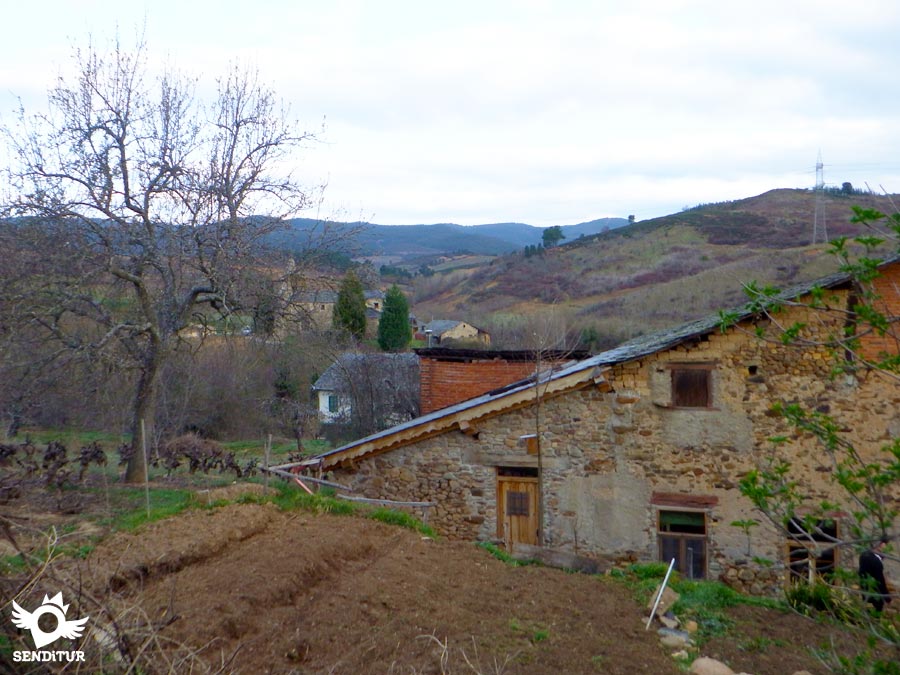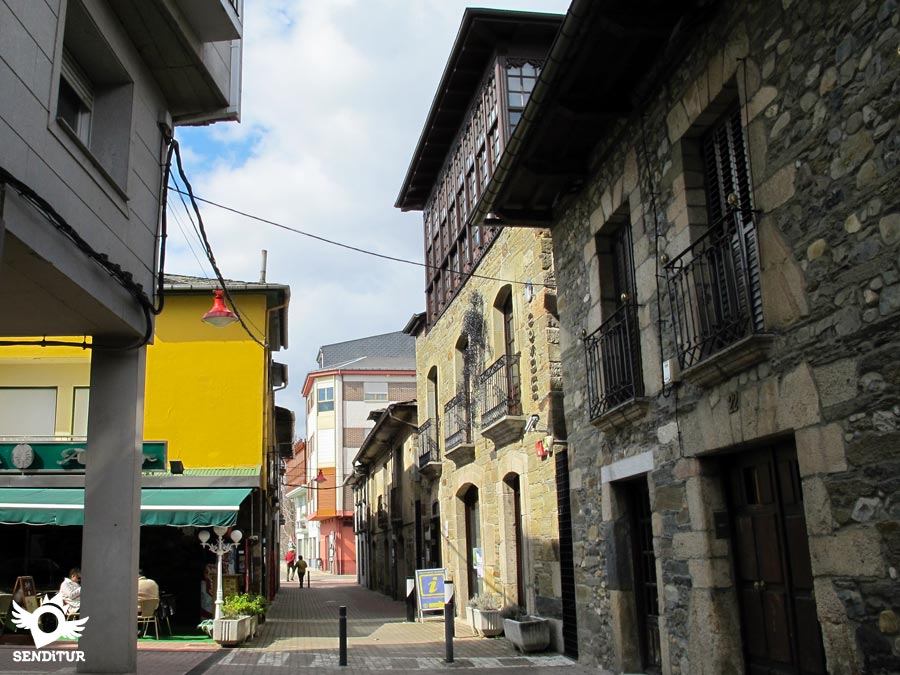It is located in the centre of the Hoya Berciana, on the banks of the river Cúa and surrounded by the Sierra de Ancares, the Cordillera Cantábrica and the Montes de León. It is known that in the Palaeolithic there was already a settlement in Cacabelos, but it is from the Bronze Age and the end of the Iron Age that more archaeological remains, tools and utensils typical of life have been found in the castro, especially in Castro Ventosa, which has been of Cultural Interest since 1931, and which is already mentioned by the Roman writers Floro and Osorio, naming it Bergidum Flavium. It should not be forgotten that in the area there were numerous gold deposits exploited by the Romans, and Bergidum became the administrative centre of all of them. Bergido, as it was named in Visigothic times, also had its importance, but when Cacabelos is mentioned, as such, it was in the 10th century, in a document donating Bermudo II to the Carracedo monastery.

The numerous disputes for his dominion were concluded by Alfonso VII with the donation of the town to the archbishop of Santiago, Diego Gelmirez, in 1138, with which Cacabelos belonged to the distant diocese of Compostela to which it was linked until 1890. The town grew under the protection and with the rise of the Way of Saint James in the Middle Ages. At the beginning of the Modern Age, XV century, Cacabelos is integrated in the marquisate of Villafranca del Bierzo. In the War of Independence the town was witness of first row, because in the zone of the bridge on the river Cúa an important battle was fought the 3 of January of 1809, between English and French. Years later, with the disappearance of the lordships, Cacabelos became a municipality made up of Cacabelos and the towns of Quilós, Arborbuena and Pieros. In the 80's of the 20th century the towns of Villabuena and San Clemente were also incorporated into the municipality of Cacabelos.

Many are the hospitals and churches that throughout the centuries were in Cacabelos and were born under the shelter of the Way and its pilgrims, but not all have stood the test of time. In the current Square of San Lázaro, where beautiful examples of popular architecture can be seen, a hospital and its hermitage were built in the Middle Ages and remained standing until the 18th century. The hermitage of San Roque is what was once the chapel of the Vera Cruz and came to be under the invocation of the patron saint against the plague, after the epidemic of the sixteenth century. Santa María Street is and has been since medieval times the most important street in the town, where all the streets and alleys of the town flow out. In other times, when Cacabelos was walled, the street had two doors at its ends, that of Cimadevilla, next to the hermitage of San Roque, and that of San Andrés, near the parish church of Nuestra Señora de la Plaza. The street is lined with mansions, many of them baroque, which show on their facades the coats of arms and coats of arms of the people who inhabited them. The church of Santa María, rebuilt in the 16th century on top of a previous one and of which an interesting Romanesque apse proudly displays, has undergone subsequent reforms, such as the one of its tower in 1904.

The Major Bridge, although it is known of the existence of another Roman bridge, dates from the 16th and 18th centuries. Passing this bridge and the mill bridge, on the outskirts of the town is the 18th century Sanctuary of Las Angustias, also known as the Quinta Angustia, which houses the carving of the patron saint of Cacabelos and where, if the visitor looks at it, he will see a relief in which Saint Anthony of Padua is playing cards with the Child Jesus. You cannot leave the village without enjoying its rich and varied gastronomy or without visiting the M.AR.CA, which is located in a typical Jacobean street, Angustias street. It is the headquarters of the Archaeological Museum of Cacabelos and occupies one of the most interesting buildings of the civil architecture of the locality, built in 1892 and was a wine cellar during the first half of the 20th century. Just over two kilometres from the beautiful and present-day town of Cacabelos and close to the walls of the Castro and the village of La Ventosa, the town of Pieros, between undulations of the land and vineyards, offers the traveller the possibility of contemplating extraordinary panoramic views, as well as visiting the famous Castro and the parish church of San Martín, medieval and consecrated in the 11th century, which is located on a hill to the left of the Castro Ventosa and the hamlet.

Cacabelos celebrates its patron saint Nuestra Señora de la Quinta Angustia, during Easter, on 15 May it celebrates San Isidro, on 15 and 16 August it pays homage to Nuestra Señora la Virgen de la Asunción and San Roque, on the last weekend of September it celebrates the Harvest Festival, in addition to the annual fairs held in May the Cruz de Mayo and in September the San Miguel Fair. In Pieros its patron saint fiestas are on 11 November in honour of San Martín.
The traditional market is held in the locality on the 9th and 26th of each month and on the first and third Mondays of each month, where you can taste and enjoy the tasty octopus of the well-known ocpeiras de Cacabelos.

It is said that the name of the Bierzo comes from Bergidum, the name of the settlement of the ancient pre-Roman city that existed here.
The mansions with the heraldic emblems blazonando the facades that are in the street of Santa Maria reflect the pride of those people who lived in them and always knew how to defend their privileges to such an extent that, according to oral history, even the butler of the Marquis of Villafranca went so far as to say: "in this town justice is not feared and each one does as he pleases ...".
To get to Cacabelos we can do it following the A-6 or the N-VI where in the section that goes from Ponferrada to Villafranca del Bierzo we will find the accesses to the locality, we can also do it from any of these two cities through the LE-713 that joins both municipalities passing through Cacabelos. Other options are the LE-712 that connects the town with Arganza and the Sierra de los Ancares or the LE-611 that does with Toral de los Vados in full N-120, in turn from Cacabelos depart other local roads that link with nearby towns such as Carracedelo.
Cacabelos has an urban and interurban bus service which is managed by different companies and which daily and at different times connect it with the neighbouring villages as well as with León and Ponferrada. The bus stop is at the Constitution Avenue. The nearest bus station is Ponferrada which is located in the Avenue of the Freedom 15. The telephone number of the station is 987 401 065.
The closest train station to Cacabelos is Ponferrada, which is located on the Ferrocarril 9 Avenue and from where services leave to Vigo, La Coruña, Zaragoza, Madrid and Barcelona. The telephone number for further information is 987 410 067.
SENDITUR is not responsible for any variation in the information described, as well as for the misuse of its guides and recommends that everyone be responsible and prudent in carrying out the activity. Likewise, we invite you to document yourself with books and specialized guides to complement the information described. From the commitment of SENDITUR with Nature and the respect to the balance of the environment, SENDITUR urges you to travel in a responsible way, with low environmental impact and respecting at all times the Natural, Cultural and Social environment wherever you go. For any suggestion, SENDITUR invites you to send an email to
8:05 h.28 km.

Continue watching …